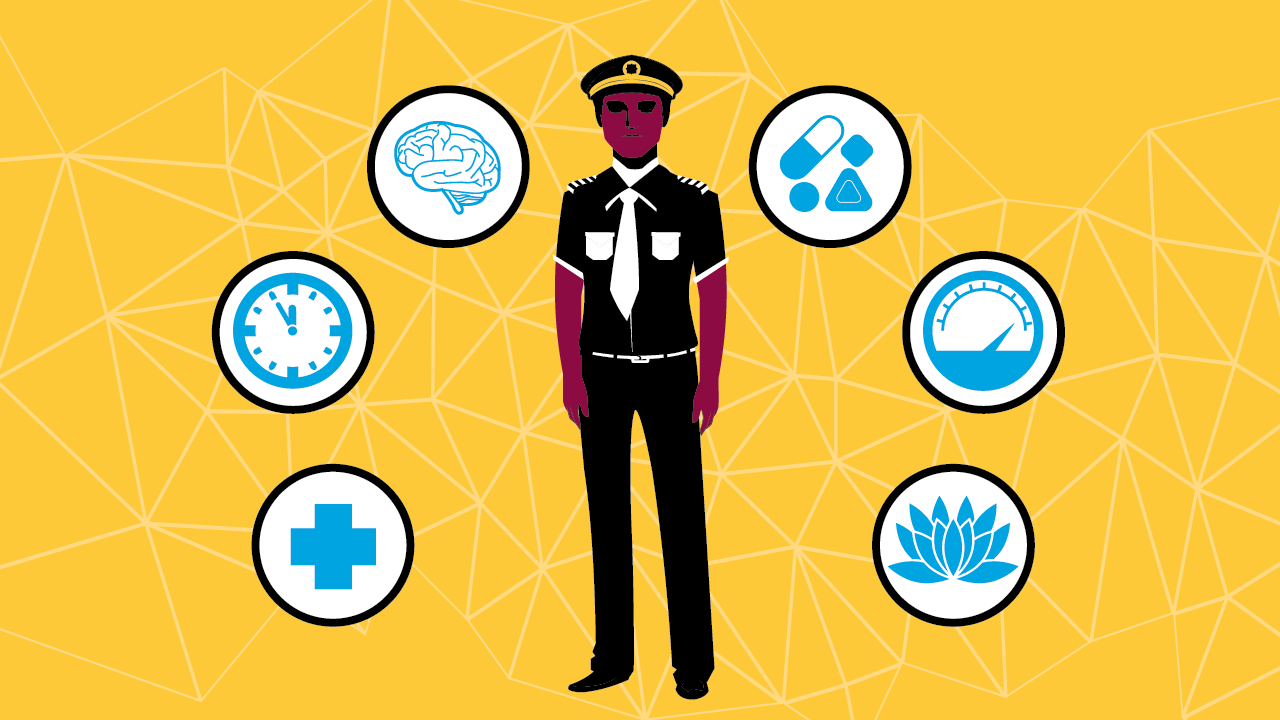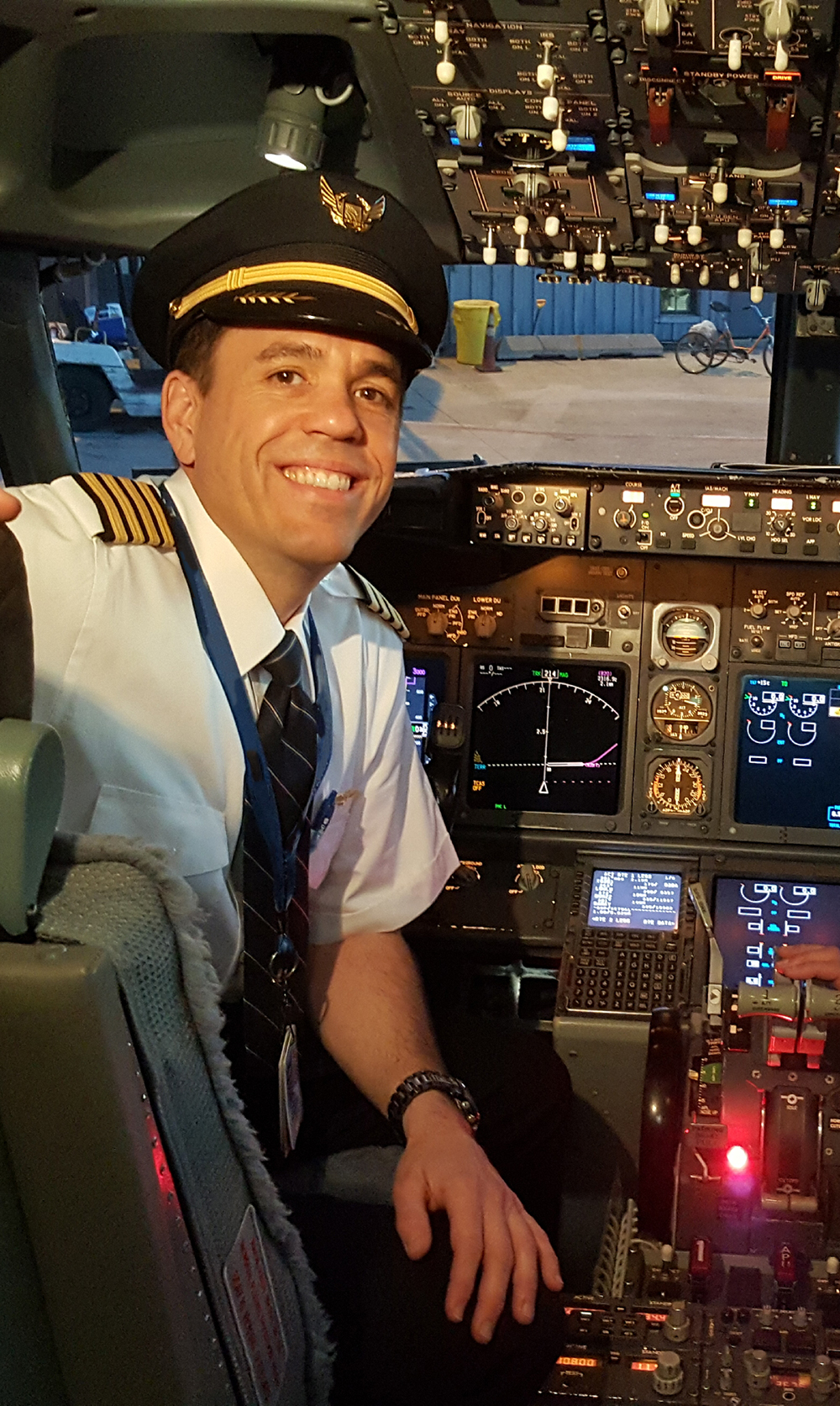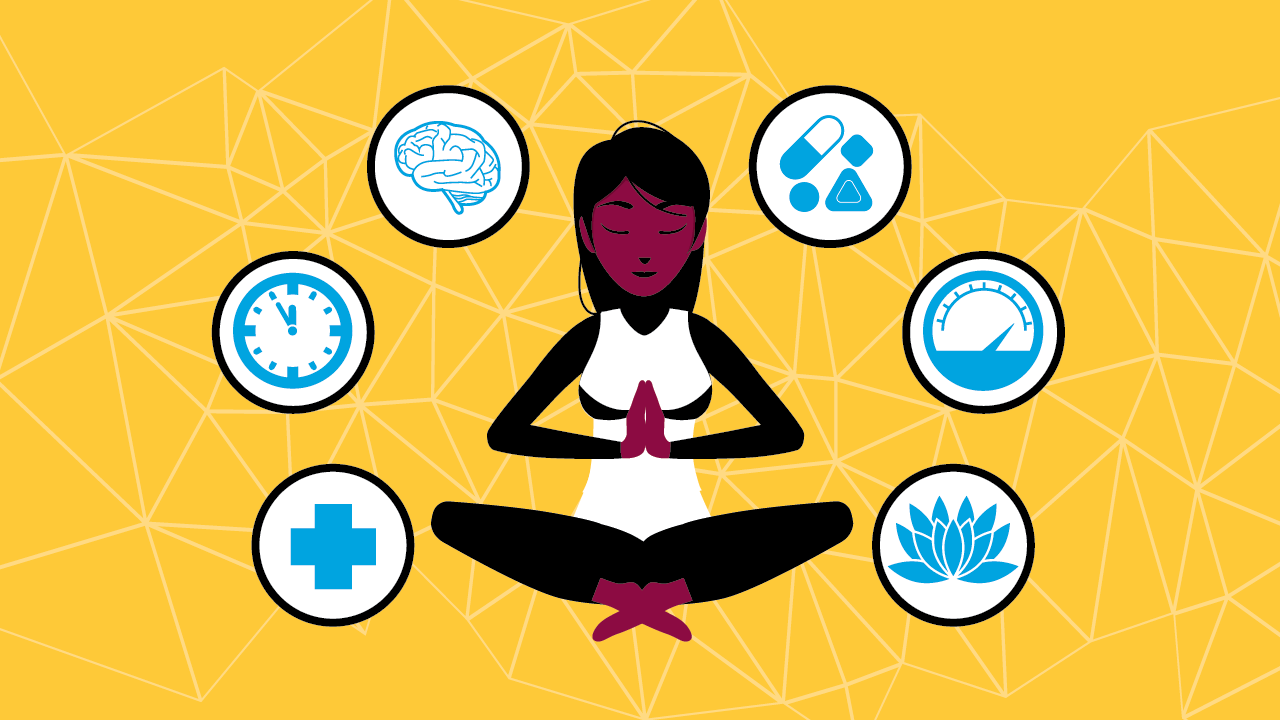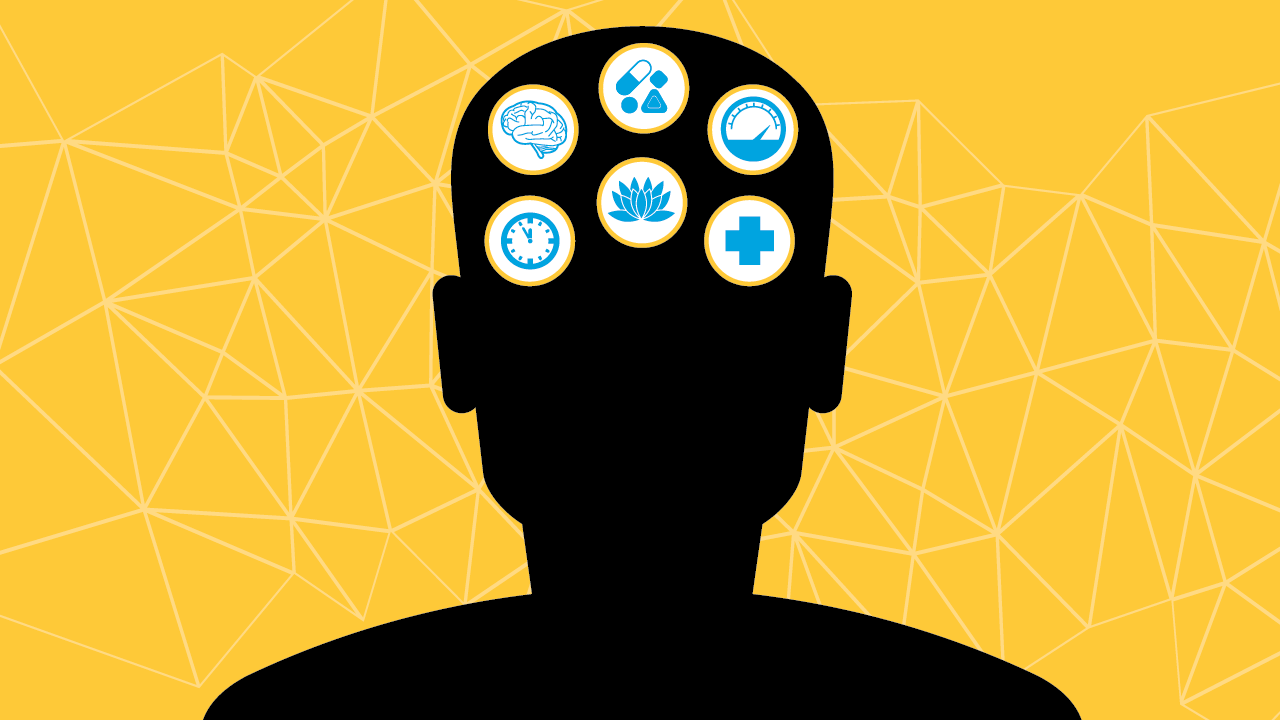
From a bundle of nerves to centered calm: Finding clarity and new habits
A device developed by Arizona State University research-based startup Hoolest Performance Technologies is relieving anxiety by using neuromodulation technology designed to enhance human performance

Above: Being able to perform under stress is an important part of work and life for commercial airline captain and Phoenix resident Greg Sumner. Nick Hool, co-founder of Hoolest Performance Technologies, is developing a noninvasive vagal nerve stimulation device to help increase human performance for people like Sumner. Graphic by Rhonda Hitchcock-Mast/ASU
This is part of a larger story about Hoolest. Read the rest of the story.
Engineering research needs to go beyond the lab to impact the communities it serves.
Nick Hool, an alumnus of the Ira A. Fulton Schools of Engineering at Arizona State University, is using his doctoral research in neuromodulation to help people in the community through his startup venture, Hoolest Performance Technologies. Hool and his small startup team are making a difference by developing and validating an investigational device that increases human performance and alleviates feelings of anxiety that disrupt people’s lives.
Hoolest is one of the first companies to be supported by the WearTech Applied Research Center in Phoenix, signifying its impact in the wearable medical technology space.

Greg Sumner, an airline captain, sits in the flight deck of a Boeing 737 aircraft. As a commercial airline pilot who has also worked in sales management and strategic development, Sumner has often faced stressful situations. His experience with Hoolest’s noninvasive vagus nerve stimulation device has helped him perform better at work and eases his stress. Photo courtesy of Greg Sumner
It’s Hoolest’s connection with the WearTech Applied Research Center that brought Greg Sumner to one of Hoolest’s clinical studies earlier this year.
The 46-year-old ASU alumnus read about Hoolest and WearTech in ASU’s Thrive magazine. He lives less than a mile away from the WearTech Center in Central Phoenix and initially wanted to check out what sounded like an excellent tool for a close family member, an Iraq War veteran who sometimes experiences debilitating post-traumatic stress disorder, or PTSD.
But Sumner, who is no stranger to stress and anxiety himself, soon realized he’d discovered a tool that could enhance his own life. In his multifaceted professional career — working in sales management and strategic development where he is often presenting to C-suite leaders, wrangling U.S. legislators on Capitol Hill, serving on organization and nonprofit boards, and, until recently, piloting Boeing 737 commercial airliners — he too experiences a fair amount of stress.
When COVID-19 tanked the travel industry, Sumner flew what might have been his last flight as a pilot for a major airline. In mid-March, over “the weekend that the world fell apart” as he calls it, he flew a group of Disney World visitors out of Orlando.
“The stress level with passengers and with coworkers was some of the highest I had ever seen,” Sumner says. “People were afraid of getting sick from something they couldn’t see. The challenge was, how do you compartmentalize their anxiety with a job that is already challenging?”
Sumner is fortunate that he received training to deal with generalized stress because the Federal Aviation Administration prohibits pilots from flying if they take medications for anxiety. However, acute stresses like he and his crew’s last flight during the COVID-19 pandemic take their toll.
Stress-related weight gain and associated health issues led Sumner to take a holistic approach, incorporating physical exercise, mindfulness, healthy eating and massages into his health regimen — and now Hoolest’s nVNS device is part of reducing Sumner’s stress, too.
Discovering a clarifying new tool
It was soon after that March 16 flight when Sumner read about Hoolest and decided to participate in a study to check out the solution.
When he arrived at the WearTech Center, he was given a math quiz. It’s a common test given as part of clinical studies that induces and measures anxiety with an electroencephalography sensor net on his head.
In the test, Sumner was briefly shown a number on the screen. It disappeared and another number appeared that he had to add to the first number. Then another number he had to add to the previous sum. And then another. As someone who is good at math, seeing “WRONG” on the screen was like a “virtual electric shock,” Sumner says, and had the desired effect of inducing anxiety as he tried to catch up.
After the test was over, he used the nVNS device for 10 minutes. Then he took the test again.
“It was an out-of-body experience,” Sumner says. “I started thinking about other things while I was taking the test — we could use this for flight training, for people learning instrument training. I was having this ‘aha’ moment about how clear-headed I was.”
He felt “centered” — and did better on the anxiety-inducing math quiz that second time. He didn’t even feel that virtual electric shock that came with the wrong answers the first time. After that, he received a prototype of the nVNS device to take home and try out.
Within a few weeks, using the device became part of his routine. When he starts feeling procrastination sneak up about a work task, the nVNS device is in his desk and ready to center him.
Though he started this journey wanting to learn about a device that calms anxiety to help veterans, he discovered something “invaluable” to his own productivity.
“Using the nVNS device has become a daily habit for me as a productivity-enhancing tool, and I seem to be sleeping better when using it at bedtime,” Sumner says. “I wake up ready to tackle the next day’s agenda.”
It has also enhanced his established habits of listening to spa music during massage, guided meditation and mindfulness. Sumner says using the nVNS device beforehand makes these practices more effective and helps him focus more. Pairing it with his other strategies is “blissful,” he says.
Relief beyond everyday performance drains
Hoolest’s nVNS device could also be helpful beyond typical work stresses and anxiety to PTSD, panic disorders and the struggles of overcoming opioid addiction. The company is focusing its clinical studies on gauging the effectiveness of the device and its technology to help people who have severe anxiety as a result of PTSD and panic disorders.
But the path to get there can be difficult for people living with these conditions.
People with severe anxiety and panic disorders often face the most barriers to receiving care. Hool also noticed that some individuals who have shown interest in his clinical study and may have benefited from the investigational nVNS device were sometimes too anxious to even enter the WearTech Center to participate in studies.
Experiencing a severe panic or anxiety event in the moment is its own challenge, says Sumner, recalling a recent captain experience when his aircraft’s windshield cracked. He relied on his piloting skills and training to get him and the aircraft to safety, but besides peer counseling from the Air Line Pilots Association, he realized he didn’t have a lot of tools to deal with the event after it occurred.
“When people who experience that PTSD event or anxiety event, they’re in the fight or flight response, the last thing they’re going to think of is being centered, it’s the antithesis of the event,” Sumner says. “All your body and brain are doing is self-preservation.”
He says it would have been helpful to have the nVNS device in his post-traumatic-event healing toolkit.
A new part of anxiety-relief habits

Developing healthy habits has also been what has helped Cassandra Johnson in her journey to overcome addiction, which can sometimes be accompanied by severe anxiety.
The 37-year-old Mesa mother of two has struggled for much of her life with a cycle of getting clean from her heroin addiction and relapsing. Opioids, which started as a bad decision in her youth, became Johnson’s coping mechanism for dealing with things like childhood trauma and bad relationships. She’s no stranger to psych wards, detox and treatment facilities, and the horrible symptoms of physical withdrawal.
“There’s nothing like the animal that is opioids. It’ll take anyone down,” Johnson says. “I allowed addiction to take everything that ever mattered to me.”
She says anxiety during addiction and detoxing is hard to see in the moment, when your brain is resetting after a physical reaction to opioids.
“Your dopamine and serotonin receptors are screaming,” Johnson says. “Your brain creates new receptors to keep up with what we’ve been loading into our brains. Our brains have hooks waiting to catch all these dopamine balls, but then we don’t have any and they’re screaming ‘where is it?’”
The pharmaceutical solutions she had tried to overcome her addiction became a crutch that just led to another dependency. Depression and anxiety were normal parts of the process of getting clean for Johnson — she had lost everything and her brain was off-balance. So she sought out a more holistic approach to try first.

Creating new habits, including yoga, has helped yoga instructor Cassandra Johnson deal with the anxiety of overcoming an opioid addiction. Hoolest’s nVNS device has become a new part of her routine to reduce anxiety. Photo by Nick Hool
The key for her was making a better mind-body-spirit connection. Physical activity gets rid of pent-up energy, and it forces her to be still and get in a state of meditation to calm her mind and spirit.
At 29, during one of the clean periods of her life, she got serious about yoga. It’s something she’d dabbled in before, but she decided it was going to be the key to her successfully kicking opioids. Johnson has had some relapses since then, most recently during the stress of COVID-19, but in all it’s been a positive and effective change that has brought stability.
“In my life, [through] all the bad stuff and impulsivity, only yoga has been able to redirect my thoughts so I can get off my mat and face these things,” she says. “I can discern what I need to respond to without reacting on my emotions. I can just stay present and work with my body.”
At 35, she decided to teach yoga, which enhanced the mind-body-spirit benefits of yoga with a connection to others that anchored her in a good place.
“In order to really hang onto my sobriety I had to share what helped me with others,” she says. “I think when dealing with anxiety, whether it stems from PTSD, addiction or anywhere else, the piece about human connection is essential. It’s the reason for support groups and things like that. I find that connection when teaching.”
A few months ago, Johnson heard about Hoolest through a family connection to Hool. In the time she’s used the nVNS device, it has become another tool to achieve her mind-body-spirit balance.
“Anxiety is a physical thing, we carry stress physically in our necks. I put Hoolest’s device on the nerve and it shakes the tension loose and relaxes it. Or if I have racing thoughts and use it before bed, it helps slow things down and clears them out,” Johnson says. “The device is a tool you can reach for that doesn’t have chemical consequences or ups and downs.”
Sign up for a clinical study on reducing anxiety symptoms
Hoolest is running a clinical study for people in the Phoenix metropolitan area who experience anxiety to try out Hoolest’s nVNS device. If you are interested in participating, sign up on Hoolest’s website for more information.




































